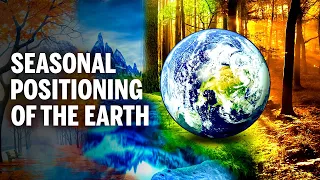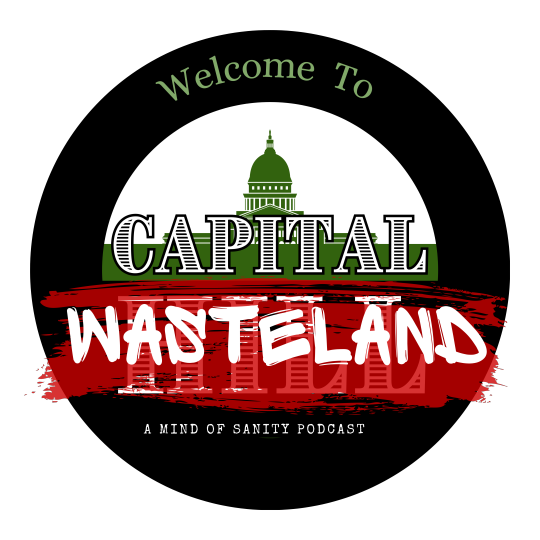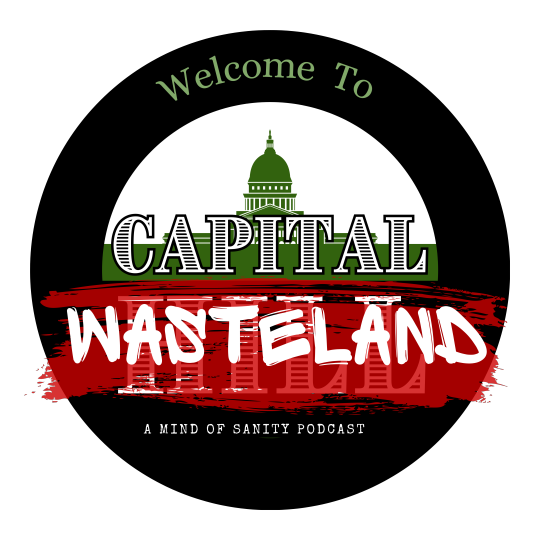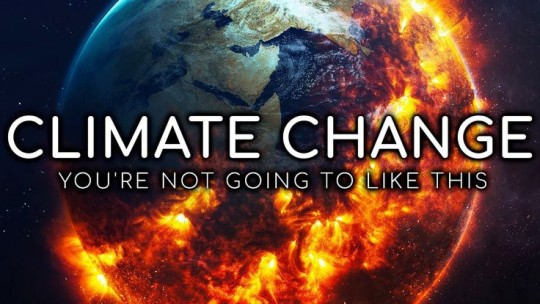#ClimateScience
Text
Tree rings reveal the secrets of the past and the present. They can show us the age of a tree, the climate conditions it experienced, and even the history of human civilizations that used its wood.
10 notes
·
View notes
Text
The Truth About Global Warming
Please join our Telegram channel to view the complete video. Click on this link: https://t.me/lifentco
#GlobalWarmingTruth#ClimateFacts#EcoAwareness#SaveOurPlanet#EnvironmentalTruths#ClimateReality#GoGreen#SustainableFuture#ClimateScience#ActOnClimate
0 notes
Text

What is the term used to describe the study of the Earth's atmosphere, weather, and climate patterns?
a) Meteorology
b) Geology
c) Oceanography
d) Climatology
#TheMasterClass#Letsconnect#quiz#EarthScienceQuiz#AtmosphericStudies#Meteorology#ClimatePatterns#WeatherAnalysis#EnvironmentalScience#EarthSystems#ClimateResearch#ScientificInquiry#ClimateScience
0 notes
Text
Scientists at the University of Western Australia have used the strontium/calcium ratio in sea sponge skeletons to track average global temperatures over the last couple of centuries. The results are ... not good. They think we've already passed the 2-degree threshold for serious climate impacts.
0 notes
Text
The Journey of Climate Science: Unraveling the Past, Facing the Future
The Journey of Climate Science: Unraveling the Past, Facing the Future
In the annals of scientific history, the story of climate change research stands as a testament to human ingenuity and the complexity of our planet’s systems. The roots of this journey trace back to 1896 when Swedish chemist Svante Arrhenius made groundbreaking strides by mathematizing the mechanism of global warming. Little did he know that his predictions would echo through the ages, shaping…

View On WordPress
#ClimateCrisis#ClimateScience#EnvironmentalHistory#FutureChallenges#GlobalWarming#HistoricalPerspectives#ScientificDiscovery#UncertaintyInScience
1 note
·
View note
Text
0 notes
Text
Unlocking the concept of Heat vs. Temperature and Earth's Temperature Factors
youtube
In this enlightening video, we delve into the fascinating world of heat and temperature. 🌡️ Discover the key distinctions between these two fundamental concepts and gain a deeper understanding of their significance in our everyday lives. Join us on a journey across the globe as we explore the various factors that influence temperature variations in different places on Earth. 🌍 From geographic location to altitude and more, you'll learn the intriguing mechanisms behind our planet's diverse climates. Whether you're a science enthusiast or simply curious about the world around you, this video is your ticket to unraveling the mysteries of heat, temperature, and the intricate web of influences that shape our planet's climate. Don't miss out—hit that play button and expand your knowledge today! 🔥❄️🌆🏞️
#climatescience#weatherpatterns#temperaturevariations#climateeducation#geographicinfluences#earthscience#scienceexplained#heatvstemperature#globalclimate#climatefacts#climatechange#scienceforallexam#weatherexplained#climateawareness#scienceiscool#Youtube
0 notes
Text
Seasons Simplified: How Earth's Tilt Shapes Our Year | Brainita UPSC

In this enlightening video, we embark on a journey to demystify the fascinating phenomenon of seasons on Earth, delving into the critical role played by the tilt of our planet's axis. With clear and engaging explanations, we'll unravel the science behind the changing seasons, from the crisp embrace of winter to the vibrant hues of summer. Discover how Earth's axial tilt orchestrates this celestial dance, creating the ebb and flow of temperature, daylight, and nature's transformations. As we explore the intricacies of this natural spectacle, you'll gain a deeper understanding of our world's interconnectedness and how these shifts impact life on Earth. Join us for an illuminating exploration of Earth's annual rhythm.
0 notes
Text
Analysis of the YT video: "Climate Change Won't Stop The Gulf Stream. Here's Why."
youtube
Disclaimer: In the following text the term "document" refers to the subtitle transcript of the YT video.
Here is a summary of the key points discussed in bullet points:
The climate science document is an educational video transcript explaining concepts like the Gulf Stream and Atlantic overturning circulation.
It provides in-depth detail on climate mechanisms using analogies and clear language for general audiences.
The document aligns with empirical, objective science and the scientific consensus on the topics covered.
The perspective is that of a climate science expert educator aiming to improve public understanding.
Stakeholders like the public, scientists, and policymakers are positively served with accurate scientific information.
The climate situation is portrayed as having established facts but significant uncertainties around risks like potential AMOC disruptions.
No major ethical issues were identified in the document's science communication approach and integrity.
AMOC collapse risks are framed as serious but debated concerns with unclear probability, timing, and impacts.
Europe benefits from the permanent Gulf Stream, but could cool significantly if the overturning circulation halts due to climate changes.
Here are the key points about the document:
The climate in Europe depends on the Gulf Stream, which brings warm water and air from the tropics. A weakening Gulf Stream could cool Europe significantly.
The Gulf Stream is an ocean current caused by Earth's rotation and winds. It cannot actually stop, only weaken.
The Atlantic Meridional Overturning Circulation (AMOC) combines with the Gulf Stream to push it farther north. A halted AMOC could weaken the Gulf Stream's effects on Europe.
The AMOC is a global system of currents that transports warm water north and cold water south. Melting ice could disrupt this overturning by freshening the water.
Models show a halted AMOC could cool Europe by up to 5°C. It might not easily restart, even if warming reverses. But models have uncertainties.
The risk of AMOC collapse is controversial. Some see signs it's slowing, others see natural variation. More research is needed.
The actual impacts of an AMOC collapse are also uncertain. It might limit further melting and sea level rise.
The video aims to clarify the difference between the permanent Gulf Stream and variable AMOC, which media often conflates.
Based on the content and structure of the document, it appears to be an explanatory video transcript.
The key characteristics that suggest this:
It has an informal, conversational tone with some humor, as if someone is verbally explaining concepts. This suggests a spoken presentation style.
There are headings introduced as "Okay, so now what's with…" which structure the information as an explanatory narrative.
Complex topics like ocean currents and climate science are explained clearly using analogies and visual aids, indicating an educational purpose.
It alternates between explaining general concepts, like the Gulf Stream, and more specific details, like the AMOC. This level of elaboration points to an in-depth explanation.
There are references to accompanying visuals and thanks given to experts, typical features of an educational video production.
The closing promotes a math/science learning platform, consistent with the educational nature and target audience.
So in summary, the document has the key features of a transcript from an explanatory educational video breaking down complex climate science topics for a general audience. The genre is likely an educational science video.
Here is a summary of the key points made in the document regarding risks of major disruptions to the Atlantic Meridional Overturning Circulation (AMOC):
Climate models show an AMOC collapse could significantly cool Europe by up to 5°C. However, these models are simplified and have uncertainties.
There are conflicting assessments from climate scientists on whether there are already measurable signs of AMOC slowing down or if observed changes fall within natural variability.
Increased melting of Arctic sea ice due to warming is considered a potential risk for disrupting the AMOC, as an influx of freshwater could interfere with overturning currents. However, the magnitude of this risk is debated.
It is unclear whether an AMOC collapse would be reversible if warming was subsequently reduced. There are concerns it could cause long-term or indefinite disruption of ocean circulation.
The document states an AMOC collapse is one possible "climate tipping point" that may not reverse course even if greenhouse gas emissions were mitigated. However, it notes the evidence is uncertain.
The video creator acknowledges an AMOC collapse could also potentially slow sea level rise by retaining more ice, highlighting scientific uncertainty about the net impacts.
Overall, risks to the AMOC from climate change are portrayed as a serious concern warranting further research, but there is no definitive consensus on the likelihood, timing, or full impacts of potential major disruptions.
In summary, the document presents AMOC collapse as a speculative but impactful "low probability, high risk" scenario with much ambiguity about its risks, reflecting the evolving state of climate science on this topic. The emphasis is on conveying the considerable uncertainties.
Here is a summary of the key points made in the document regarding climate in Europe:
Europe has a mild climate relative to similar latitudes thanks to the warm water brought by the Gulf Stream ocean current.
The Gulf Stream originates in the tropics, flows north along North America's east coast, crosses the Atlantic, and warms Europe's climate as prevailing winds blow this heat over the continent.
The Gulf Stream is driven by Earth's rotation and winds, so cannot actually cease. But it could be weakened if the Atlantic Meridional Overturning Circulation slowed.
The Atlantic overturning circulates warm water northward across the equator. As the water cools at higher latitudes, it sinks and flows back southward.
Climate models suggest a halt to this overturning circulation could cool Europe by up to 5°C on average as the northward flow of heat decreases.
However, scientists debate whether the overturning is actually slowing and if it's near tipping points. Impacts of a shutdown are also uncertain.
The document aims to clarify frequent media confusion between the permanent Gulf Stream and the variable overturning circulation. Only the latter is at climate risk.
In summary, the document emphasizes that while Europe benefits from the Gulf Stream, this ocean current itself is not in danger. However, uncertainties exist around climate effects if the related Atlantic overturning circulation were disrupted due to changes in temperature, salinity and density.
Here is an evaluation of the level of detail in the document:
Provides extensive background on relevant climate concepts before discussing the Gulf Stream and AMOC specifically. It starts with an explanation of wind patterns, coriolis forces, and how oceans moderate temperature.
Goes in-depth on both the Gulf Stream and AMOC - what they are, what drives them, how they differ. Draws clear distinctions between the two.
Discusses multiple complex factors that relate to the AMOC like salinity, temperature gradients, and sea ice melt. Explains the debate around AMOC's impact on the Gulf Stream.
Touches on climate modeling and uncertainties, explaining why predictions about AMOC are challenging. Provides different viewpoints from multiple experts.
Explains terminology clearly and defines specialized vocabulary like "thermohaline circulation" and "North Atlantic Gyre."
Uses vivid examples and visualizations to illustrate points, indicating thorough effort to help audience understand.
Provides historic background on relevant scientific discoveries like the Gulf Stream and jet streams.
Overall, the document provides a high level of detail on the topic, while avoiding being overly technical. It gives thorough explanations of underlying climate mechanisms and uncertainties, not just surface commentary. The depth and precise terminology demonstrate a robust understanding of the domain.
Based on my analysis, I would categorize this document as follows:
Science vs Fiction:
It presents scientific information about climate systems, referring to research, data, and models. No fictional elements. Clearly aligns with science.
Empirical vs Anecdotal:
Discusses measurable climate phenomena like ocean currents and makes fact-based arguments grounded in physics. Does not rely on isolated personal experiences or stories. Empirical basis.
Fact vs Opinion:
Focuses on explaining objective facts about how climate systems work. Does not present subjective viewpoints. Distinguishes between evidence and uncertainties/debates.
Objective vs Subjective:
Aims to educate on the science without imposing perspectives. Maintains an impartial tone, aside from light humor. Goal is sharing verifiable knowledge.
In summary, the status of the document lies firmly on the scientific, empirical, factual, objective side of these spectrums. It demonstrates a commitment to accuracy, evidence-based arguments, and an educational purpose. While no document can be purely objective, the intent is to provide valid scientific information on climate systems apart from personal biases.
Based on my analysis, the perspective of the document is that of an expert climate scientist aiming to accurately explain complex climate systems and scientific principles to a lay audience:
The perspective is very knowledgeable about the details of ocean currents, climate modeling, and the uncertainties involved. This indicates the perspective of an expert in the field.
It takes care to explain concepts clearly using analogies and examples, not assuming background knowledge. The goal is making the content accessible.
The tone is conversational and occasionally humorous, but not overly technical or academic. This reflects a perspective of translating complex topics for the general public.
Where there are debates among climate scientists, like on AMOC risks, the document acknowledges different viewpoints rather than promoting a single perspective.
The emphasis is on teaching the core scientific concepts and climate mechanisms objectively, not swaying opinions.
There is some skepticism of media portrayals of climate science, indicating a perspective of wanting to correct misinformation.
Promotion of the sponsor is focused on tools for further science learning, rather than any political or value-based agendas.
In summary, the overriding perspective is that of a climate science educator seeking to act as an approachable but knowledgeable guide to the field for non-experts. The goal is explaining valid science without inserting subjective biases.
Based on my review, the document aligns very closely with the scientific consensus on the topics covered:
The explanations of Earth's wind patterns, ocean currents like the Gulf Stream, and the jet streams match current scientific understanding and textbooks on atmospheric circulation and oceanography.
The description of the Atlantic Meridional Overturning Circulation as a driver of poleward heat transport is consistent with research on this global ocean conveyor belt.
The potential impacts of climate change on the AMOC, such as changes in salinity and temperatures affecting water density and circulation, reflect conclusions from peer-reviewed studies.
The uncertainties discussed around risks of major AMOC disruptions, as well as alternative viewpoints, mirror the ongoing debates among climate scientists evidenced in journals.
The critique of media conflation of the Gulf Stream and AMOC matches concerns from experts about misrepresenting climate science.
The level of detail on mechanisms behind winds, currents, and climate systems aligns with the knowledge standard in the field.
In summary, I did not find any statements or positions in the document that contradict or deviate from the scientific consensus on the topics covered. It takes care to capture current understandings and debates accurately and comprehensively for its target audience.
Here are some key stakeholders affected by this educational climate science document and an evaluation of how they are affected:
General public:
Gain improved understanding of climate systems relevant to their lives. Empowered to make more informed choices.
Climate scientists:
Have their work and perspectives represented accurately to the public. Misconceptions about their research are addressed.
Environmental advocates:
Public is better informed on climate change risks and potential impacts like Gulf Stream effects. Can strengthen advocacy efforts.
Fossil fuel companies:
Public clarity on climate science may increase scrutiny or opposition to emissions-intensive industries.
Policymakers:
A scientifically literate public provides a mandate for evidence-based policymaking on climate issues.
Educators:
Can use the climate science explanation as a resource to improve curriculum. Helps public better understand their lessons.
Media/journalists:
May be more careful about conflating Gulf Stream and AMOC, improve climate change reporting.
In summary, the main stakeholders positively served are the general public, climate scientists, and environmental advocates, by improving climate literacy. Fossil fuel interests may be negatively affected. Overall, the document empowers many different groups with clear, accurate scientific information.
Here is my evaluation of the situation described in the document:
It presents climate science concepts like Earth's wind and ocean current patterns as well-established facts supported by physics and measurements.
The Gulf Stream is assessed as a permanent feature driven by Earth's rotation and winds, which cannot actually cease operating. This is a stable situation.
However, the stability of the Atlantic Meridional Overturning Circulation is evaluated as uncertain, with conflicting evidence on whether it is slowing down and the risk of future abrupt changes.
The potential impacts of an AMOC collapse are also portrayed as uncertain, especially regional effects on temperatures and ice melt. Different perspectives in models are highlighted.
The document expresses concern about media misrepresentation causing public confusion between the permanent Gulf Stream and variable AMOC. Improved communication is advocated.
While urgent risks are not indicated, there is caution that the AMOC may be approaching or crossing tipping points that could lead to irreversible changes on long timescales, underscoring the need for more research.
In summary, the situation is depicted as scientifically complex, with established facts about some climate systems but also many persistent uncertainties and knowledge gaps. Conveying this nuanced picture to the public accurately is implied to be an ongoing challenge requiring improved communication.
Based on my review, there are no major ethical concerns with the situation described in the document for the following reasons:
The document aims to educate the public on scientific facts. It does not promote any unethical agendas.
The science is presented in an evidence-based manner with appropriate caveats around uncertainty. No misinformation is conveyed.
Potential risks like an AMOC collapse are characterized objectively based on peer-reviewed research, not exaggerated or minimized.
No stakeholders are maligned. Critique of media conflation of terms is restrained and supported by arguments.
Public transparency and climate literacy are promoted as ethical aims that empower society.
Values like scientific truth, academic rigor, open inquiry, and policy relevance shape the communication style and content.
There are no evident conflicts of interest or biased framing. Sponsor promotion is reasonable for access to free educational content.
No controversial solutions are advocated that raise ethical debates about means or ends. Only descriptive science is discussed.
In summary, I do not detect violations of ethical standards in the situation described. If anything, the document upholds strong ethics of science communication, academic integrity, and social responsibility by enlightening the public on climate science accurately and accessibly.
Here are some key criteria for evaluating the genre of this document as an educational science video transcript, along with my assessment:
Purpose:
Explains climate science concepts in an accessible, engaging way for a general audience.
Structure:
Logical sequence moving from basics to specifics. Divided into sections with descriptive headers.
Tone:
Conversational, with some humor and asides. Friendly and inviting.
Language:
Plain language definitions of technical terms. Use of analogies and examples to aid explanation.
Details:
In-depth information and elaboration on concepts, not just surface-level.
Visual aids:
Clear references to accompanying visuals and graphics.
Credibility:
Thanks and references given to climate experts who assisted production.
Audience engagement:
Direct address of viewers and use of "we" to involve audience. Promotion of sponsor tied to target audience interests.
Based on an assessment of these key criteria, the document matches the characteristics expected of an educational science video transcript intended to engage and inform a general audience on climate topics. The criteria evaluation aligns with and confirms the initial genre classification.
EBZPYJlwAJPDAAih5k9Q
#ClimateScience#Oceanography#AMOC#ClimateEducation#ClimateLiteracy#ClimateFacts#ClimateUncertainties#ClimateTippingPoints#EuropeClimate#PublicStakeholders#PolicyStakeholders#ScientificEthics#CCEdu#ClimateTwitter#Youtube
1 note
·
View note
Text

Discover the secrets of effective climate change communication in "Don't Even Think About It" by George Marshall. 🤯📖
Read Here
https://www.skyecotrio.com/post/strategies-for-effective-climate-change-communication
#ClimateChange#ClimateCommunication#Sustainability#GeorgeMarshall#DontEvenThinkAboutIt#ClimateResilience#InspireChange#ClimateAdvocacy#EnvironmentalAwareness#ClimateSolutions#EffectiveCommunication#ClimateEducation#BookRecommendation#ClimateActionNow#GreenLiving#ClimateScience#ClimateAwareness#LearnFromBooks
0 notes
Text
Understanding Climate Change: A Simple Guide
Introduction:Causes of Climate Change:Greenhouse Gases:Deforestation:Effects of Climate Change:Rising Temperatures: Melting Ice and Rising Sea Levels: Extreme Weather Events: Ocean Acidification: Mitigating Climate Change:Reducing Greenhouse Gas Emissions: Reforestation: Energy Efficiency:Sustainable Practices: Accountability: Conclusion:
Introduction:
Climate change is a term we often hear in…

View On WordPress
#ClimateAction#ClimateChange#ClimateCrisis#ClimateEducation#ClimateScience#ClimateSolutions#Deforestation#EffectsOfClimateChange#EnergyEfficiency#EnvironmentalAwareness#EnvironmentalIssues#ExtremeWeatherEvents#FutureOfOurPlanet#GlobalWarming#GreenhouseGases#MeltingIce#MitigatingClimateChange#OceanAcidification#ProtectingTheEnvironment#ReducingEmissions#Reforestation#RenewableEnergy#ResilientFuture#RisingTemperatures#SeaLevelRise#Sustainability#SustainablePractices
0 notes
Text
Understanding Climate Change: A Simple Guide
Introduction:Causes of Climate Change:Greenhouse Gases:Deforestation:Effects of Climate Change:Rising Temperatures: Melting Ice and Rising Sea Levels: Extreme Weather Events: Ocean Acidification: Mitigating Climate Change:Reducing Greenhouse Gas Emissions: Reforestation: Energy Efficiency:Sustainable Practices: Accountability: Conclusion:
Introduction:
Climate change is a term we often hear in…

View On WordPress
#ClimateAction#ClimateChange#ClimateCrisis#ClimateEducation#ClimateScience#ClimateSolutions#Deforestation#EffectsOfClimateChange#EnergyEfficiency#EnvironmentalAwareness#EnvironmentalIssues#ExtremeWeatherEvents#FutureOfOurPlanet#GlobalWarming#GreenhouseGases#MeltingIce#MitigatingClimateChange#OceanAcidification#ProtectingTheEnvironment#ReducingEmissions#Reforestation#RenewableEnergy#ResilientFuture#RisingTemperatures#SeaLevelRise#Sustainability#SustainablePractices
0 notes
Photo

⁉️ www.thegreenplan.ie #environment #sustainabilitydevelopment #sustainability #resources #community #together #life #air #trees #nature #marine #leadership #ourplanet #peoplebeforeprofit #thegreenplan #forest #Sea #climatechange #climatescience #takeaction (at Ireland (country)) https://www.instagram.com/p/CnVFtbuMe-6/?igshid=NGJjMDIxMWI=
#environment#sustainabilitydevelopment#sustainability#resources#community#together#life#air#trees#nature#marine#leadership#ourplanet#peoplebeforeprofit#thegreenplan#forest#sea#climatechange#climatescience#takeaction
0 notes
Text
youtube
#fog#fogharvesting#watercrisis#waterproblem#water_crisis#climatechange#sustainability#globalwatercrisis#drinkingwater#waterscarcity#cleanwater#fognets#water_harvesting2022#watershortagecrisis#desert#watertechnology#scarcityofwater#sustainabledevelopment#climatescience#climate#water_supply#fogbreakingnews#waterbreakingnews#harvesting_breakingnews#technology#facts#didyouknow#didyouknowfacts#Youtube
0 notes
Text
Weekly Update, 30 Nov 2022
The microblogging world looks pretty unsettled right now, so I'll be focusing my attention here for the time being. Which includes regular updates about climate news and helpful resources around the web.
English translations of Chinese energy policy, news, and energy statistics. Use with caution -- the translations are crowdsourced and the underlying material is from the Chinese government -- but it's a good start. https://chinaenergyportal.org/en/
The IPCC Summary for Policymakers remains a highly readable summary of climate science findings. This is the link for non-technical people in search of an overview. (PDF) https://www.ipcc.ch/report/ar6/wg1/downloads/report/IPCC_AR6_WGI_SPM.pdf
For information in video form, this is a nice five-minute introduction to the economics of climate , via UC Berkeley. https://youtu.be/KsHGPSUH7J0
0 notes
Text

#Sustainability♻️ #IndependentMedia🗞️🎙️🖥️ #ClimateScience🌨️🌤️🌧️🌪️🔬 #SWD🕸️ #G2S🌿 Thankyou (Under 23 Mins Video) "Your Not Going To Like This 🤔 #Astrum #THENEWECONOMY💲 https://youtu.be/dpvd9FensT8?si=AEpgpzAAE8gXPo9s


0 notes